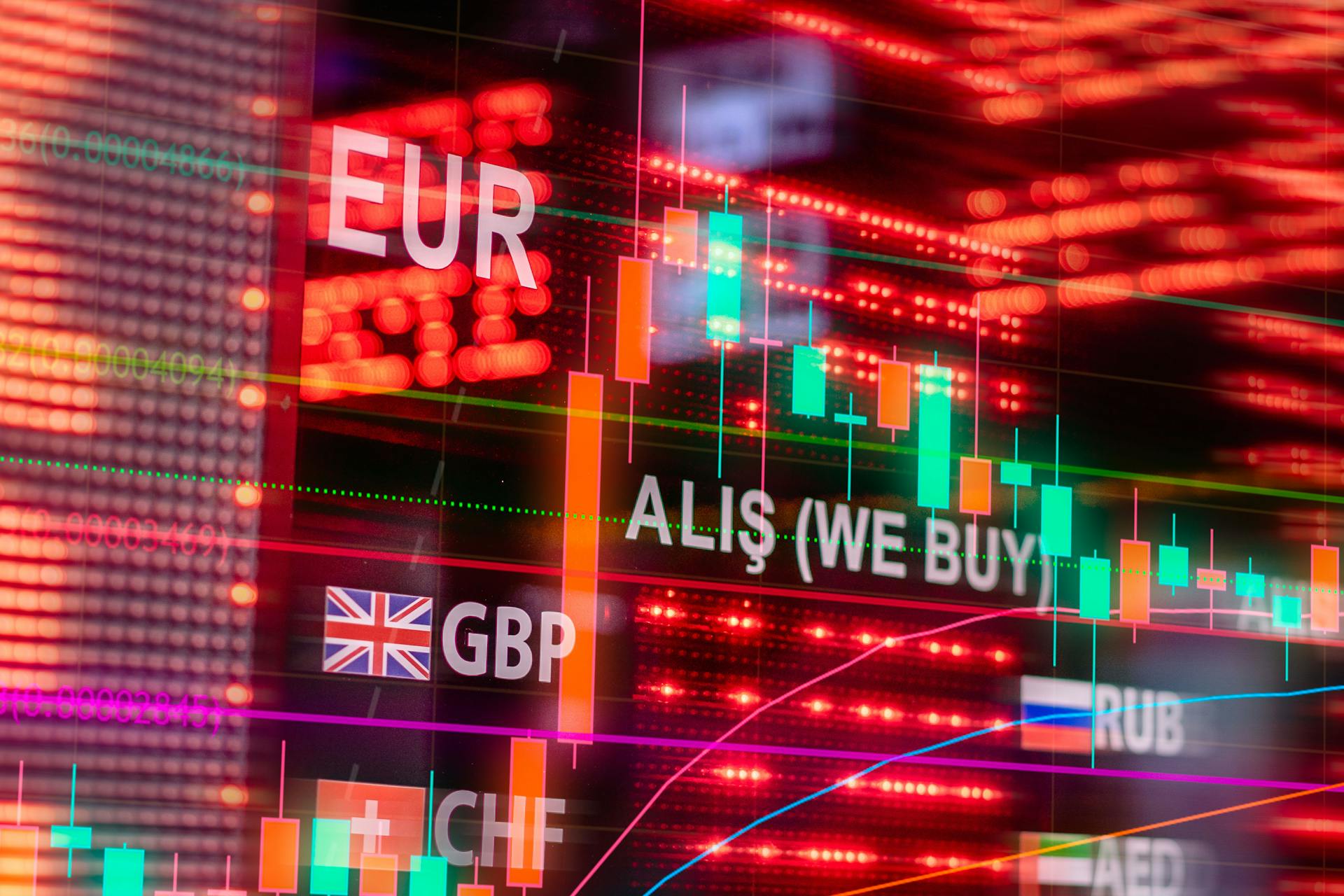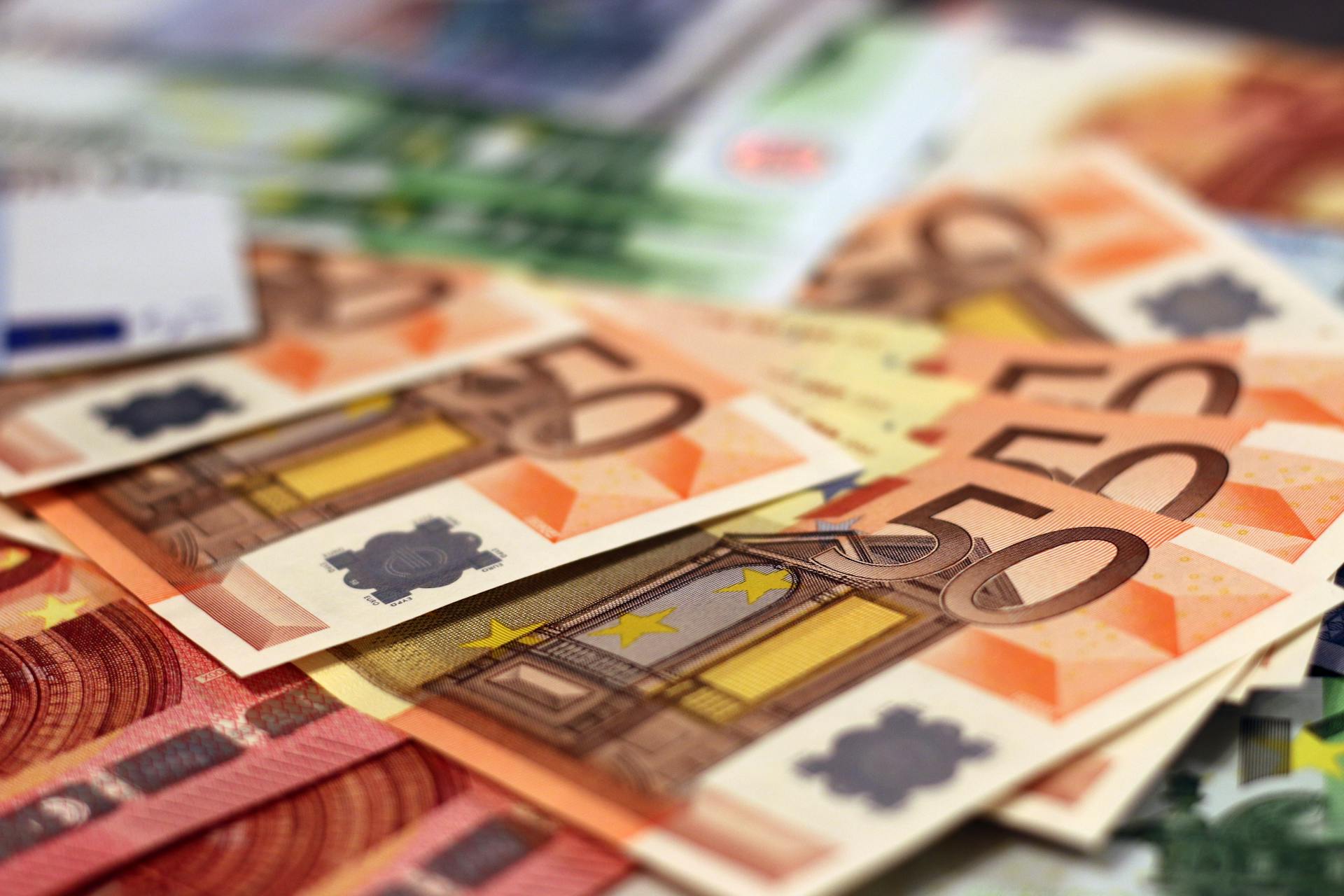
The CHF currency code is a three-letter code that represents the Swiss franc, the official currency of Switzerland. It's an essential part of international trade and finance.
The CHF code is used in various contexts, including financial transactions, currency exchange rates, and international business. It's a widely recognized code that facilitates global commerce.
The Swiss franc has a rich history dating back to the 19th century, with the CHF code being introduced in the mid-20th century.
What is CHF?
The Swiss franc, abbreviated as CHF, is the official legal tender of Switzerland, Liechtenstein, and the Italian region of Campione d'Italia. It's also known as the Swissie by currency market traders.
CHF stands for Confoederatio Helvetica franc, the Latin name for the Swiss Confederation. This name gives you a glimpse into the country's rich history and cultural heritage.
The Swiss franc is the only franc still issued in Europe after other nations adopted the euro. It's a unique and stable currency that's widely recognized and traded around the world.
The Swiss National Bank issues banknotes, while Swissmint, the federal mint, is responsible for producing coins. This division of labor ensures that the currency is both secure and efficiently managed.
CHF is the eighth most traded currency in the world, giving you an idea of its global significance and importance in international trade and finance.
Key Facts
The CHF currency code is used for the Swiss franc, which is the official currency of Switzerland, Liechtenstein, and Campione d'Italia.
CHF is the only franc still issued in Europe after other nations adopted the euro. This is a significant distinction that sets it apart from other currencies.
One of the reasons CHF is popular is its status as a safe-haven currency. This means that investors often turn to it during times of economic uncertainty.
Here are some key facts about the Swiss franc:
- Currency Name: Swiss Franc
- Short Name: CHF
- Nicknames: Stutz, Stei, Eier, Chuffs
- Symbol(s): CHF, Fr, SFr
The Swiss franc is divided into 100 units, known as Rappen, Rp (German), Centime, C (French), Centesimo, Ct (Italian), or Rap, Rp (Romansh).
Exchange Rates and Value
The Swiss franc, with its CHF currency code, has been a strong performer against the U.S. dollar. The U.S. dollar has steadily lost value against the Swiss franc from 2019 through 2024, making the franc a stronger currency than the dollar.
As of October 2024, the Swiss franc was worth $1.1664 U.S. dollars. This means that for every CHF, you can exchange it for approximately 1.1664 USD.
The exchange rate can be influenced by cross-currency rates, such as EUR/CHF or GBP/CHF. For instance, a rise in GBP/CHF due to a UK interest rate increase can make the Swiss franc weaker than other currencies, like the dollar.
Here's a breakdown of the CHF exchange rates against various currencies:
Beware of bad exchange rates, as banks and traditional providers often have extra costs that they pass on to you.
Switzerland and CHF
The Swiss National Bank (SNB) is the central bank of Switzerland, with complete autonomy in determining monetary and exchange rate policy. It uses cutting-edge methods to control interest rates and manage liquidity.
The SNB doesn't base its monetary policy on a particular money market rate, unlike most central banks. Instead, it uses foreign currency swaps and repurchase agreements to affect the money supply and interest rates.
The most widely circulated banknote in Switzerland is the 1000-franc bill, making up 61.1% of all circulated bills. This is also one of the most valuable banknotes worldwide, with a value of 1000 Swiss francs (CHF).
The official currency of Switzerland is the Swiss franc (CHF), which comes in various denominations, including coins and banknotes. The most often used banknotes include 10 francs, 20 francs, 50 francs, 100 francs, 200 francs, and 1000 francs.
Here's a breakdown of the most common banknotes in Switzerland:
Switzerland: A Guide
Switzerland is known for its unique currency, the Swiss franc (CHF). The CHF is widely used in Switzerland and is also traded globally.
You can exchange CHF for other currencies like HKD, TZS, and UGX. The CHF is a stable currency, often used as a safe-haven asset in times of economic uncertainty.
The Swiss National Bank (SNB) is responsible for regulating the CHF and making monetary policy decisions. The SNB has complete autonomy in determining monetary and exchange rate policy.
Swiss currency coins come in various denominations, including 5 francs, 2 francs, 1 franc, and smaller centime values. You can find these coins in circulation throughout Switzerland.
The most commonly used banknotes in Switzerland include 10 francs, 20 francs, 50 francs, 100 francs, 200 francs, and 1000 francs. The 1000-franc banknote is the highest circulated bill and is also the second most valuable bill worldwide.
The Swiss National Bank has implemented unique methods to control interest rates and manage liquidity, including foreign currency swaps and repurchase agreements. This strategy has had a significant impact on the value of the Swiss franc.
Confederation Issues
Switzerland has a complex system of government, which can be a challenge for outsiders to understand.
The country has a federal system, with power divided between the federal government and 26 cantons.
Each canton has a significant degree of autonomy, which can sometimes lead to conflicts with the federal government.
The federal government has a relatively weak central authority, which can make it difficult to implement national policies.
The Swiss people have a strong tradition of direct democracy, with many decisions made through referendums and initiatives.
This system can lead to a high degree of voter participation, but also to confusion and inefficiency.
The Swiss have a unique system of government, which has been shaped by their history and cultural identity.
The country's complex system of government has been a subject of debate and discussion for many years.
History and Background
The Swiss franc has a rich history that dates back to the late 18th century when Switzerland was a confederation of independent cantons, each with its own currency.
In 1798, the French revolutionary army invaded Switzerland and introduced the Helvetic Republic, a new state that aimed to centralize power and modernise the country, by introducing a new currency called the franc based on the French franc.
The Helvetic Republic was short-lived, and in 1803, Switzerland regained its independence, but the franc remained in use as a standard unit of exchange among the cantons.
The Swiss Federal Constitution of 1848 stated that the federal government would be the only organization authorized to issue currency in the country, paving the way for the establishment of the Swiss franc as a monetary unit.
The Swiss franc was established at par with the French franc on May 7, 1850, marking a significant milestone in the currency's history.
Between 1865 and the 1920s, Switzerland, along with France, Italy, and Belgium, formed the Latin Monetary Union, linking the values of their currencies to the value of silver.
During World War II, the Swiss Franc played a crucial role in international finance, as Switzerland remained neutral and its banks became a safe haven for investors and governments seeking to protect their assets from the conflict.
The Swiss Franc's stability and security made it a popular choice for international transactions, and it remained a key player in the global economy even after the war.
The Bretton Woods exchange rate system, designed in the aftermath of World War II, included the Swiss franc and correlated its exchange rate with the price of gold until May 2000.
Today, the Swiss franc is still widely traded on the foreign exchange market and the futures market, with the euro being its most frequent trading partner.
Coins and Banknotes
All Swiss coins are language-neutral, featuring only numerals, the abbreviation Fr., and Latin phrases. They are minted in various metals, including silver, gold, and aluminum bronze.
The highest denominated coin generally circulated is 5 francs, but numerous commemorative coins exceed this in face value. Here's a list of current Swiss coins:
The Swiss National Bank was established in 1907 and took over the issuance of banknotes from the cantons and banks.
Current Coins
Current coins in Switzerland are designed to be language-neutral, featuring numerals, the abbreviation "Fr.", and Latin phrases like "Helvetia" and "Confœderatio Helvetica". This way, the coins are easily recognizable regardless of the four official languages spoken in Switzerland.
The coins are made from a variety of materials, including aluminum bronze, cupronickel, and silver. For example, the 5 rappen coin is made from aluminum bronze (92% copper, 6% aluminum, 2% nickel), while the 10 rappen coin is made from cupronickel (75% copper, 25% nickel).
Some coins depict iconic Swiss imagery, such as the standing Helvetia on the ½ franc coin, or the Alpine herdsman on the 5 franc coin. These designs add a touch of national pride to the coins.
Here's a list of the current coins in Switzerland, including their values, diameters, and masses:
Commemorative Coins
Commemorative coins are a fun way to celebrate special occasions. The Swiss Confederation started issuing commemorative coins in 1857, with the first one being a shooting thaler for a festival in Bern.
These coins are still being minted today, and new ones are introduced annually by the Swissmint since 1974.
The Swiss Confederation issues commemorative coins at face values of 10, 20, and 50 francs. However, these coins are not considered legal tender and can only be exchanged for their face value.
Liechtenstein, an official user of the Swiss franc, has permission to mint its own coins since 1981.
Banknotes
The Swiss National Bank has a long history of issuing banknotes, with the first series introduced in 1907 featuring denominations of 50, 100, 500, and 1000 francs.
The banknotes have undergone several series, with the third series only featuring two denominations, 20 and 100 francs, and the fourth series being a reserve series that was never issued.
The sixth series, designed by Ernst and Ursula Hiestand, was notable for its vertical orientation on the reverse side, but it was recalled in 2000 and will lose its value in 2020.
A seventh series was printed in 1984 as a reserve series, but it was never used and the designs were eventually released and the notes destroyed.
The fifth series, which lost its value in 2000, had a total value of 244.3 million francs, which was transferred to the Swiss Fund for Emergency Losses.
The current, eighth series of banknotes, designed by Jörg Zintzmeyer, was issued starting in 1995 with a theme of arts, and features new designs and security features.
Frequently Asked Questions
What is a 3-letter currency code?
A 3-letter currency code is a standardized abbreviation that represents a country's currency, used for international financial transactions and forex markets. Established in 1978, these codes are a crucial part of global financial communication.
Is SFr the same as CHF?
Yes, SFr and CHF are interchangeable currency codes for the Swiss franc. Both represent the official currency of Switzerland.
How do you write CHF currency?
The currency code for Swiss Francs is CHF, represented by the symbol CHF.
Featured Images: pexels.com

